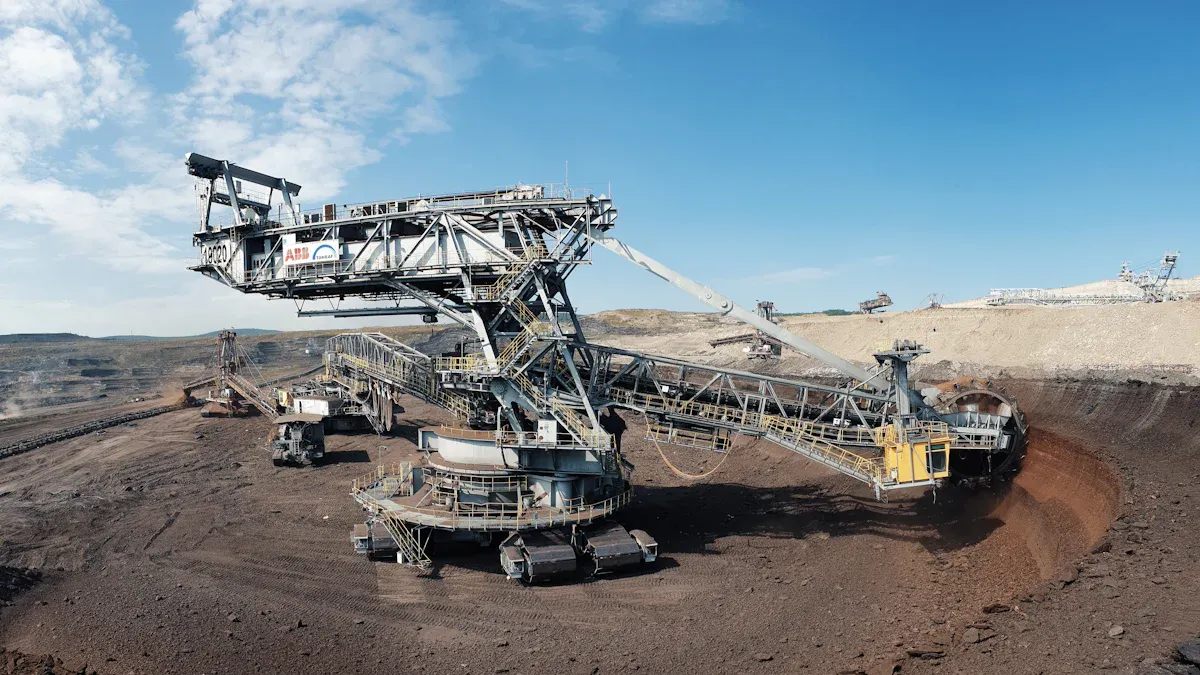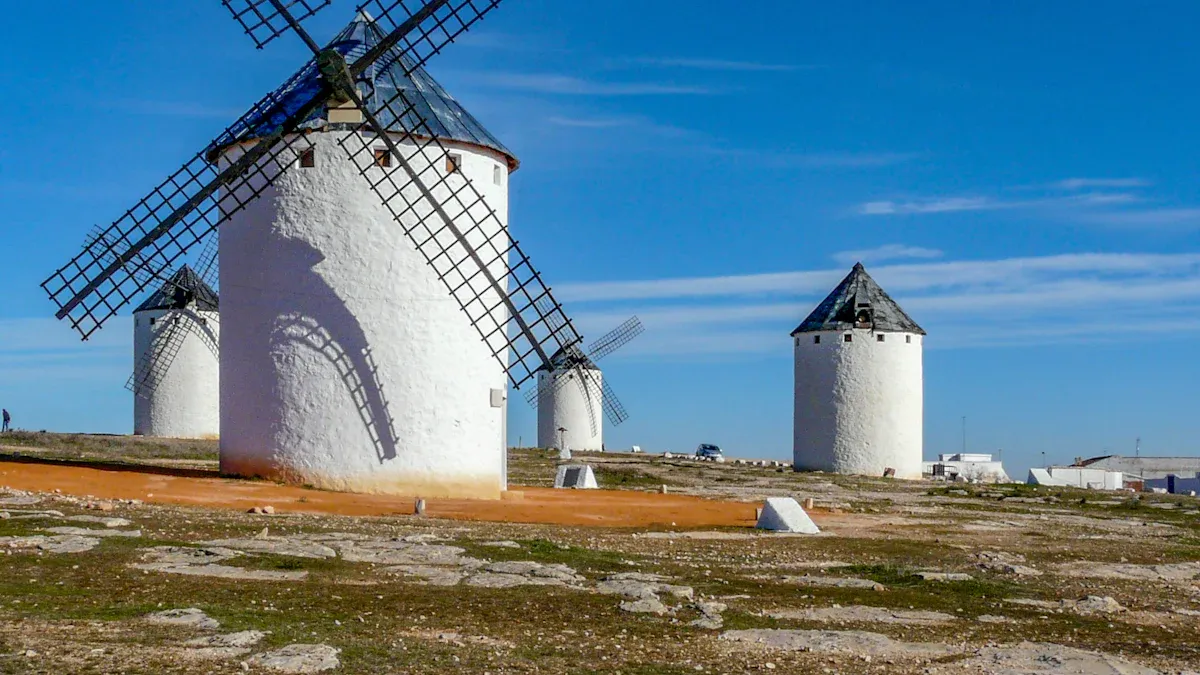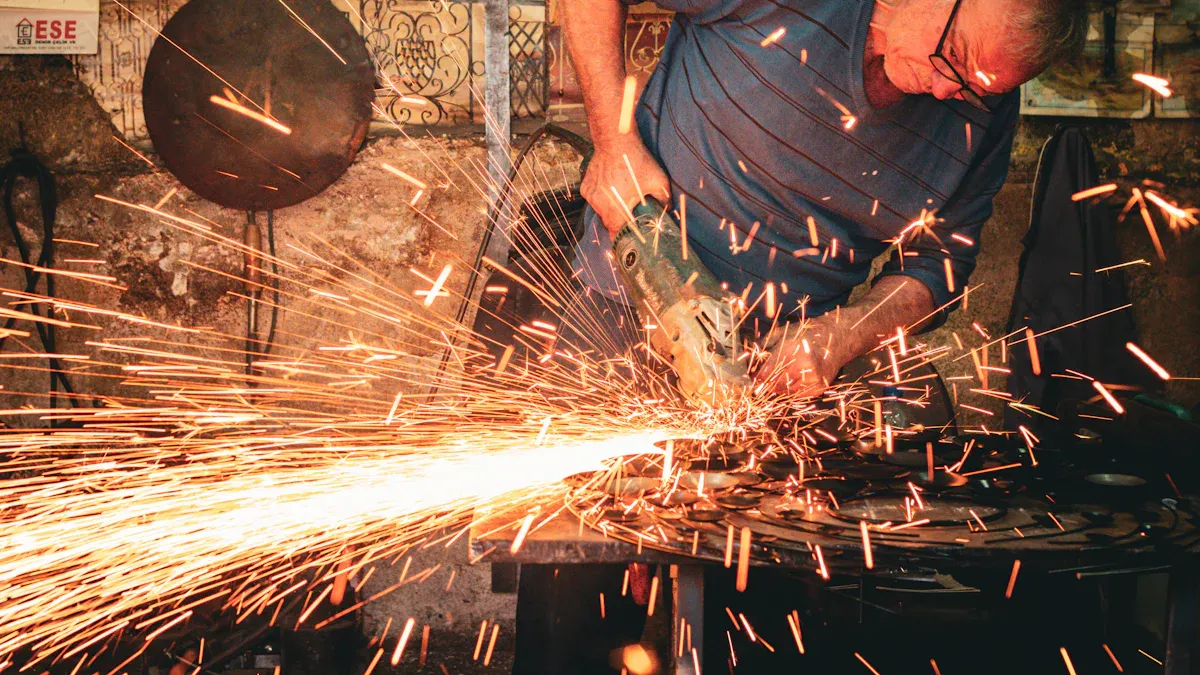+86-158-0332-0235
- All
- Product Name
- Product Keyword
- Product Model
- Product Summary
- Product Description
- Multi Field Search
Views: 0 Author: Site Editor Publish Time: 2025-10-22 Origin: Site










You see mill liners inside grinding mills. These liners protect the cylinder and help lift the grinding media, making the process more efficient. Mill liners transfer energy, improve grinding, and keep your equipment safe from wear. Different types, like SAG, ball, and rod mill liners, use materials such as steel or rubber to match each grinding job. The design and thickness of a mill liner can change how well your mill works.
Mill liners last about eight months in mining ball mills.
You use about 0.2 kg of liners for every ton of ore crushed.
Replacing liners makes up around 6% of your ball mill operating costs.
Mill liners keep the grinding mill shell safe from harm and damage. This helps your equipment last longer.
Picking the right mill liner material, like steel or rubber, can make grinding work better. It can also help use less energy.
Check and change mill liners often to keep things working well. This also helps stop the mill from being out of use for too long.
Different liner shapes and thicknesses change how energy moves and how well grinding works. Pick liners that fit your grinding needs.
Buying good mill liners can help you save money over time. It lowers repair costs and makes the mill work better.

You find mill liners inside grinding mills. These liners act as a protective layer between the mill shell and the materials you want to grind. A mill liner is made from strong materials like rubber, steel, or composite alloys. You use these liners because they can handle the tough job of crushing and grinding rocks or ore into smaller pieces. The liners absorb the impact from the grinding media and the ore, which keeps the mill shell safe from damage. Without mill liners, the shell would wear out quickly, leading to expensive repairs and lost time.
Note: Mill liners come in different shapes and sizes. You might see lifters, plates, or wave liners, each designed for a specific grinding task.
Mill liners do more than just protect the shell. You rely on them to help the grinding process work better. Here are some key roles that mill liners play in grinding mills:
They shield the mill shell from wear, impact, and corrosion.
They guide the movement of the grinding media, making sure energy transfers to the ore in the best way.
Different liner shapes help spread out the impact force, which improves grinding efficiency.
They help reduce noise and vibration, making your work area safer.
Modular liner designs make it easier for you to replace worn parts, so you spend less time on maintenance.
When you choose the right mill liners, you help your grinding mill run smoothly and efficiently. You also lower the risk of breakdowns and keep your operation running longer.
Mill liners keep the inside of grinding mills safe from damage. They act like a shield between the mill shell and grinding media. This stops the shell from wearing out fast. Using the right mill lining system helps you avoid expensive repairs. It also helps your mill last longer.
Here is a table that shows different mill liners and how they protect your mill:
Mill Liner Type | Protective Role |
|---|---|
Grid Liners | Guard the cylinder and help move steel balls well. |
Double Wave Liners | Need exact angles to fit, which gives better protection and performance. |
Solid Liners | Simple to put in but can get heavy and lose power over time. |
Crusher Liners | Must match feed size to stop uneven wear and crush right. |
You can pick sag mill liners, ball mill liners, or rod mill liners for your grinding job. Each type gives special strength and protection for your mill.
Mill liners do more than just protect the mill. They help move energy from the mill to the grinding media and ore. Good liners make sure energy from the spinning mill shell goes to the grinding media the best way. This energy transfer is important for breaking ore and making grinding better.
Here is a table that shows how parts of mill liners change energy transfer:
Aspect of Mill Liners | Impact on Energy Transfer |
|---|---|
Design | Changes how well the mill grinds and works. |
Wear | Changes how ore and balls move, power use, and stress. |
Lifter Bar Profile | Makes grinding better and gives more impact energy. |
Changing Dimensions | Changes how the mill works and affects money results. |
A good liner lifts the grinding media high for strong grinding.
If the liner is too thin, it cannot lift the media enough, so you need more energy.
If the liner is too thick, it changes the mill’s space and makes grinding less good.
You can see that the design and thickness of mill liners matter a lot for how well your mill works.
You want your grinding mills to work their best. Mill liners help by making the grinding media and ore move better inside the mill. The right liner design gives better charge motion, so more energy goes into grinding and less is wasted.
If the charge motion is too weak, you do not get enough grinding energy.
If the charge motion is too strong, you waste energy with wear and noise.
Worn liners cannot lift the charge well, so grinding is not as good.
Here is a table that shows how lifter designs change grinding and efficiency:
Lifter Configuration Type | Impact on Grinding Performance | Energy Utilization Efficiency | Lifter Lifespan |
|---|---|---|---|
Increased Lifter Height | Gives better cataract load | Uses energy better | Lasts longer |
More Lifters | Makes grinding better | Uses less power | Lasts longer |
Isosceles Trapezoidal | Works better than right-angled | Bigger spaces help | Lasts longer |
Flatter Lifter Side | Smaller effect on grinding | Higher efficiency | N/A |
When you work to make grinding better, you get more output and use less energy. The right mill liners help you reach this goal.
Tip: Check your liners often for wear. Changing them at the right time keeps grinding safe and efficient.
You want your mill liners to last a long time. How long they last depends on the materials you pick and if they fit your grinding job. If you pick the wrong material, liners wear out fast and cost more to replace.
You should check your liners four to five times while they are used.
If you change the liner design or process, check them more often.
Plan checks during service stops so you do not get surprised.
Using strong materials like pure rubber or steel-rubber mixes makes liners tougher and last longer. This means you do not have to replace them as much and you save money. Liners that last longer mean less downtime and better grinding.
How tough your mill liners are is important for saving money in grinding. When liners last longer, you spend less on new ones and your mill keeps working. This helps you make more money and keeps your grinding mills safe from harm.

When you pick a mill liner, you must think about what it is made of. The right material helps your mill last longer and work better. Each liner material has special strengths for different mills.
Steel liners are very tough and protect the mill well. You often use them in ball mills and other big grinding mills. Steel liners can take hard hits and do not wear out fast. There are different steel types, like high manganese steel, high chromium cast iron, and bainitic steel. Each type works best in certain grinding jobs.
Here is a table that shows how steel types are different:
Steel Type | Wear Mechanism | Performance Characteristics |
|---|---|---|
Pearlitic Steel | Micro-cutting, micro-indentation | Good resistance to micro-cutting; wear resistance increases with load |
Carbide-free Bainitic Steel | Micro-fatigue, micro-cracking | Superior impact abrasive wear resistance, especially at low loads; better resistance to delamination under high impact loads |
Steel liners work best for tough grinding jobs. Steel U8z, for example, lasts four times longer than low-carbon steel. This means you save time and money on fixing your mill.
Rubber liners are good for wet grinding. They last longer because rubber does not wear out fast in wet mills. Rubber liners can last two to four times longer than alloy liners. They also make the mill quieter by lowering noise by 10-15 decibels. This helps keep your ears safe and makes the mill safer.
Here is a quick list of good and bad points:
Advantages | Limitations |
|---|---|
Impact Resistance | Limited Wear Resistance |
Noise Reduction | Deformation Under Heavy Load |
Lightweight | Limited Heat Resistance |
Cost-Effective | Chemical Degradation Possible |
Customization | N/A |
You should use rubber liners if you want less noise and longer life in wet grinding. They are also lighter, so you can put them in more easily.
Composite liners use both steel and rubber together. You get toughness from steel and flexibility from rubber. Composite liners help lower wear and make grinding better. They also help the mill work more efficiently. You can use composite liners in many mills, especially if you want both strength and less noise.
You can see that choosing the right mill liner depends on what you need for grinding. Each material gives special benefits for how well it works and how long it lasts.
You can use less energy in grinding mills by picking the right mill liners. Good liners help move energy better during grinding. If you choose sag mill liners, ball mill liners, or rod mill liners that fit your needs, you waste less energy and make grinding work better. The table below shows how energy moves inside a mill:
Parameter | Value |
|---|---|
Total collision energy | 526,069.53 J |
Maximum energy dissipation | 627,606.06 J |
Highest energy dissipation | 443,915.37 J |
Mill liners also help stop wear, so you use less power. You can cut linear wear by 40-50% if you set lifter bars the right way. If lifter bars are not set right, you use more power and your mill does not work as well. Liners made from manganese steel or rubber take in shock and keep energy on grinding the ore. This helps make grinding better.
You want your grinding mills to work well and make more. When you change your mill liner, you can make your mill run longer and give more output. For example, Martabe’s SAG mill lasted longer and had less downtime with a better discharge system. You can see the results in the table below:
Operating rate | Production capacity | Electricity consumption |
|---|---|---|
92.32% | 54.37 t/h | 21.45 kW·h/t |
You can use products like DynaPrime® to get six months of use at high speed. These changes help your grinding process stay steady and strong.
You want to spend less time and money fixing your mill. Mill liners are important for this. If you know how long liners last, you can plan repairs and stop your mill less. Rubber liners are easy to care for because they do not break or chip fast. Composite liners cost more at first, but you can save up to 20% on repairs over five years. Here are some things to remember:
Rubber liners: Cheaper to care for and easy to put in.
Steel liners: Cost more because they wear out in hard jobs.
Composite liners: Cost more at first, but need less fixing later.
When you pick the right liner, your grinding mills last longer and you spend less on repairs.
Mill liners help keep grinding mills safe and working well. They make the mill last longer and help it work better. They also help keep people safe. You can see what mill liners do in this table:
Function/Benefit | Description |
|---|---|
Protection | Stops the mill shell from getting worn out. |
Efficiency | Helps the grinding media and material move right. |
Longevity | Makes the mill last longer and need less fixing. |
Safety | Lowers the chance of problems and keeps things safer. |
If you pick the right liner and take care of it, you stop wear and save time. Trying new designs and using smart tools can help you save money. These things also help your mill work better. Always look for ways to make your mill liners work best and last longer.
You use mill liners to protect the mill shell from wear and damage. They also help move the grinding media and ore, making the grinding process more efficient.
You can lower energy use by choosing the right mill liners. Good liners help transfer energy to the grinding media, so you get better grinding with less wasted power.
You should check your mill liners four to five times during their use. Regular checks help you spot wear early, facilitating maintenance and reducing downtime.
You can pick steel, rubber, or composite liners. Steel works well for tough jobs. Rubber is good for wet grinding. Composite liners give you both strength and flexibility.
You keep your mill running longer with good maintenance practices. Regular care helps you avoid sudden breakdowns and saves money on repairs.